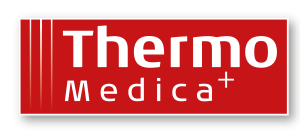Antioxidant Hydrogen
- Akhavan, O., et al., Hydrogen-rich water for green reduction of graphene oxide suspensions. International Journal of Hydrogen Energy, 2015. 40(16): p. 5553-5560.
- Berjak, P., et al., Cathodic amelioration of the adverse effects of oxidative stress accompanying procedures necessary for cryopreservation of embryonic axes of recalcitrant-seeded species. Seed Science Research, 2011. 21(3): p. 187-203.
- Hanaoka, K., Antioxidant effects of reduced water produced by electrolysis of sodium chloride solutions. Journal of Applied Electrochemistry, 2001. 31(12): p. 1307-1313.
- Hanaoka, K., et al., The mechanism of the enhanced antioxidant effects against superoxide anion radicals of reduced water produced by electrolysis. Biophysical Chemistry, 2004. 107(1): p. 71-82.
- Hiraoka, A., et al., In Vitro Physicochemical Properties of Neutral Aqueous Solution Systems (Water Products as Drinks) Containing Hydrogen Gas, 2-Carboxyethyl Germanium Sesquioxide, and Platinum Nanocolloid as Additives. Journal of Health Science, 2010. 56(2): p. 167-174.
- Hiraoka, A., et al., Studies on the properties and real existence of aqueous solution systems that are assumed to have antioxidant activities by the action of “active hydrogen”‘. Journal of Health Science, 2004. 50(5): p. 456-465.
- Kato, S., D. Matsuoka, and N. Miwa, Antioxidant activities of nano-bubble hydrogen-dissolved water assessed by ESR and 2, 2′-bipyridyl methods. Materials Science and Engineering:, 2015. C 53: p. 7-10.
- Lee, M.Y., et al., Electrolyzed-reduced water protects against oxidative damage to DNA, RNA, and protein. Appl Biochem Biotechnol, 2006. 135(2): p. 133-44.
- Ohsawa, I., et al., Hydrogen acts as a therapeutic antioxidant by selectively reducing cytotoxic oxygen radicals. Nat Med, 2007. 13(6): p. 688-694.
- Ohta, S., Molecular hydrogen as a novel antioxidant: overview of the advantages of hydrogen for medical applications. Methods Enzymol, 2015. 555: p. 289-317.
- Park, E.J., et al., Protective effect of electrolyzed reduced water on the paraquat-induced oxidative damage of human lymphocyte DNA. Journal of the Korean Society for Applied Biological Chemistry, 2005. 48(2): p. 155-160.
- Park, S.K., et al., Electrolyzed-reduced water confers increased resistance to environmental stresses. Molecular & Cellular Toxicology, 2012. 8(3): p. 241-247.
- Park, S.K. and S.K. Park, Electrolyzed-reduced water increases resistance to oxidative stress, fertility, and lifespan via insulin/IGF-1-like signal in C. elegans. Biol Res, 2013. 46(2): p. 147-52.
- Penders, J., R. Kissner, and W.H. Koppenol, ONOOH does not react with H2. Free Radic Biol Med, 2014.
- Qian, L., et al., Administration of hydrogen-rich saline protects mice from lethal acute graft-versus-host disease (aGVHD). Transplantation, 2013. 95(5): p. 658-62.
- Shi, Q.H., et al., Hydrogen Therapy Reduces Oxidative Stress-associated Risks Following Acute and Chronic Exposure to High-altitude Environment. Biomed Environ Sci, 2015. 28(3): p. 239-41.
- Shirahata, S., et al., Electrolyzed-reduced water scavenges active oxygen species and protects DNA from oxidative damage. Biochemical and Biophysical Research Communications, 1997. 234(1): p. 269-274.
- Yan, H., et al., Mechanism of the lifespan extension of Caenorhabditis elegans by electrolyzed reduced water–participation of Pt nanoparticles. Bioscience, Biotechnology, and Biochemistry, 2011. 75(7): p. 1295-9.
- Yan, H., et al., electrolyzed reduced water prolongs caenorhabditis elegans lifespan, in Animal Cell Technology: Basic & Applied Aspects. 2010, Springer Netherlands. p. 289-293.
- Yan, H.X., et al., Extension of the Lifespan of Caenorhabditis elegans by the Use of Electrolyzed Reduced Water. Bioscience Biotechnology and Biochemistry, 2010. 74(10): p. 2011-2015.
- Yanagihara, T., et al., Electrolyzed hydrogen-saturated water for drinking use elicits an antioxidative effect: a feeding test with rats. Biosci Biotechnol Biochem, 2005. 69(10): p. 1985-7.
